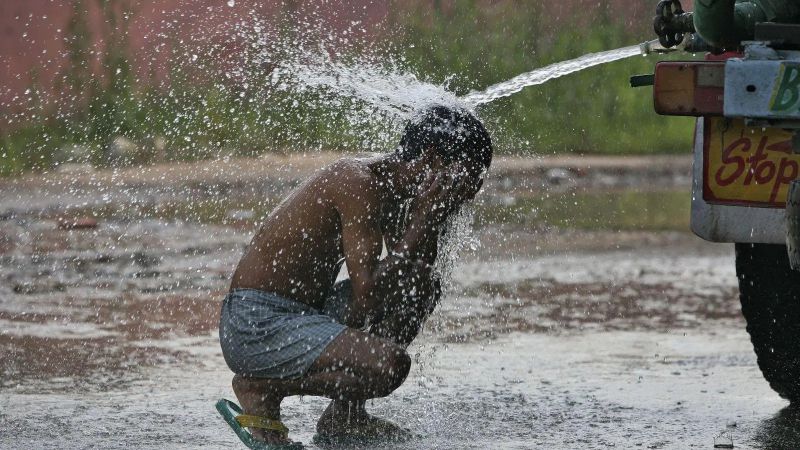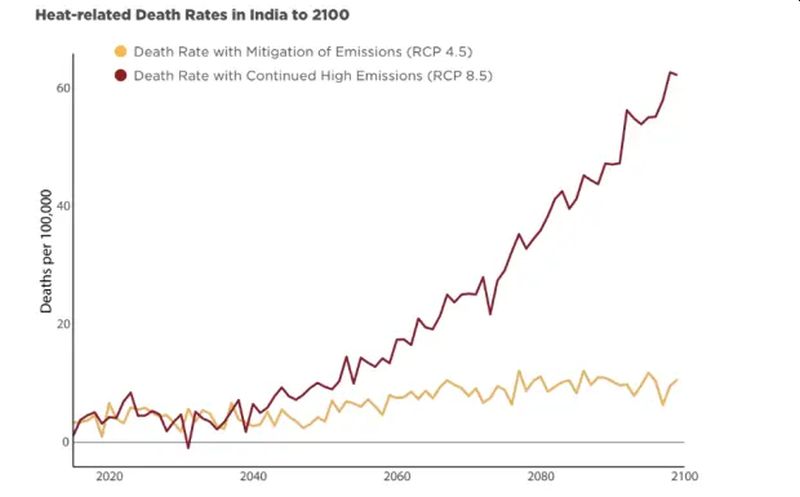Rising Temperatures Could Kill 1.5 Million Indians Each Year by 2100
India is one of the most affected countries by the climate change crisis. Trying to meet the demands of a huge population for food and shelter, the government has been exploiting the resources of the land. Mass tree-cutting and land degradation are already resulting in droughts, heavy rains and consequently many natural disasters.
In June 2019, India witnessed intense heatwaves in many parts of the country, with temperatures frequently reaching 50 degrees Celsius in the regions of Rajasthan.
Delhi also recorded the highest ever June day temperature of 48 degrees Celsius on June 10. Consequently, July 2019 was declared the hottest month on Earth in recorded history.

July 2019 was recorded the hottest month in recorded history / Image: Quartz
Recently, a study conducted by Climate Impact Lab in collaboration with the Tata Center for Development (TCD) at the University of Chicago, USA, revealed some unnerving climatic facts for the future of the country.
The study suggests that continued high emissions of greenhouse gases are projected to lead to a 4 degree Celsius rise in average annual temperature in India by 2100. The study also predicts that around 1.5 million or more people may die in India each year owing to the extreme heat. Such mortality rate is as high as the current combined death rate from all infectious diseases in India.

The mortality rate in India owing to extreme heat by 2100 / Image: Quartz
According to the study, this increase in the average temperature is not the same for the whole country. At continued high emissions, some regions such as northwest India, Indo-Gangetic plain, and southeast coast of the country – the regions already experiencing extreme heat – are likely to witness average summer temperature around 40 degrees Celsius.
Presently, Punjab is the hottest region of the country with an average daily summer temperature of 32 degrees Celsius, while Haryana, Rajasthan, and Delhi are close behind. By 2100, 16 out of 36 states and union territories are anticipated to be hotter than Punjab.
Delhi’s average summer temperatures are expected to increase by 4 degrees Celsius and there are going to be predicted 23,000 climate-related deaths annually by 2100.
What’s even more unsettling is that days with more than 35 degrees Celsius are set to rise from 5 per year in 2010 to 42 per year in 2100. The carbon dioxide levels will reach 940 ppm by the end of this century.
The research also shows that the mortality rate can be significantly reduced with the implementation of sufficient measures to rectify the situation. The reduction of greenhouse gas emissions can considerably lower the death rate by almost 80 percent. Although people might adapt to the rising temperatures, it is likely to take many lives.
The situation might be out of hand but it is never too late to make amends. Cutting carbon emissions and increasing the green area is a good start to minimize the impact. Although the world leaders are working in this direction, action-oriented feasible things need to be done faster.
Via: Quartz


